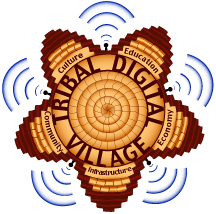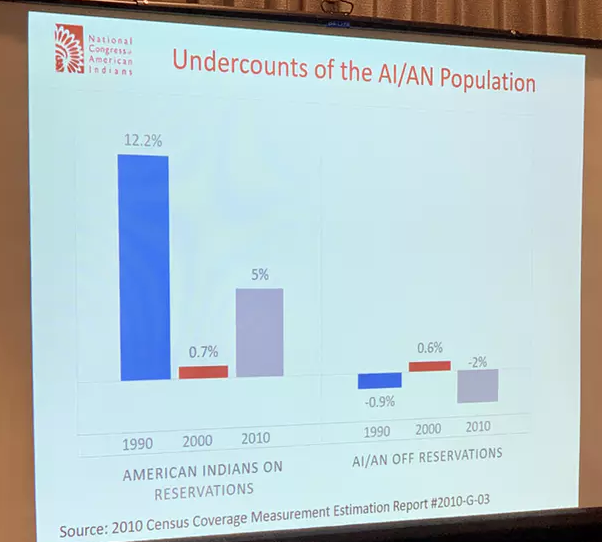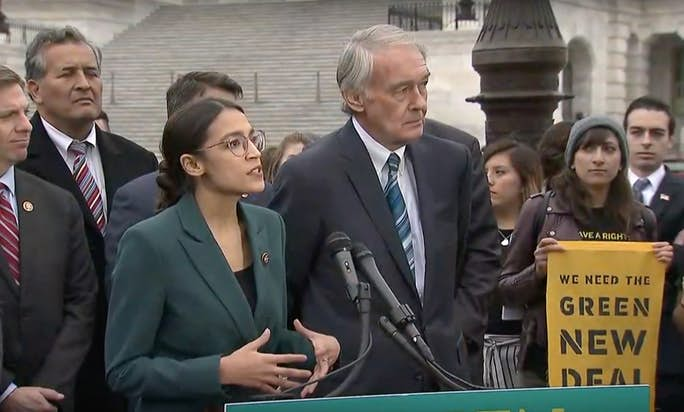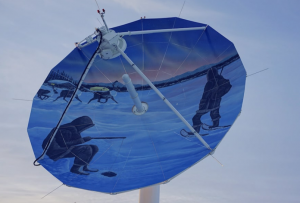Help Wanted: More Native Americans needed in Congress, state legislatures
Mark Trahant
Indian Country Today
KANSAS CITY — Native Americans are underrepresented in nearly every state and in the federal offices, according to a new analysis by Amber Ebarb of the National Congress of American Indians Policy Research Center. She shared her data at a general session at the NCAI Mid Year meeting.
The numbers are stark. There are currently two members in the U.S. House of Representatives who are members of tribes, Oklahoma Republicans Tom Cole and Markwayne Mullin. But if the representation of Indian Country was proportional, based on the population, there would be at least seven Native American members in the House and two in the Senate. And, as I have reported often, in the entire history of the United States there has never been a Native American woman elected to the Congress. (Debra Haaland, running in today’s election in New Mexico is someone who could break that record.) There are currently 15 #NativeVote18 candidates running for the House and Senate.

Ebarb’s analysis shows a disparity at the state level where Native Americans are underrepresented in every state. There are now nine Native Americans serving in the legislature in Montana, but if Native people were proportionally represented that number would climb to 12. The Montana primary is today and there are 18 Native candidates running for the legislature. Other states show even greater disparity. In Oklahoma, for example, parity would mean electing ten new Native members of the legislature, eight in South Dakota, eight in North Dakota, and four in Alaska.
There is also a disparity when it comes to voting and voting registration. She cited Arizona as an example of that. There are at least 106,000 Native Americans registered to vote, while the potential pool is 209,000 voters. And even then the turn out of those who are registered was a little more than 55,000 (or about 40 percent) in 2016.
Ebarb said there are a million potential voters who could be registered and could participate across the country. The Native vote has already impacted several major elections from Alaska’s 2010 write-in campaign of Sen. Lisa Murkowski to the narrow victory by Montana Sen. Jon Tester.
Even small numbers make a difference in close elections. Ebarb said there are 32 congressional seats where the margin of the Native vote is 1.5 percent or more (and many of the races could be closer than that).
Ebarb said her analysis was nonpartisan. “We are highlighting these races because it is somewhat easier to make our issues salient to candidates in tight contests. Our goal is to encourage engagement with candidates so they know the importance of treaty promises, the challenges we are facing with health care and our educational systems,” she said. “Where we can be the deciding vote, candidates pay even more close attention to our needs.”
Over the years both parties have misunderstood tribal sovereignty issues and both parties have at different times suppressed the voices and votes of tribal citizens and women. “However, it is critical that policy makers see the importance of the Native vote,” she said. “With a well-functioning democracy, we should see better policy wins.”
But the key is organizing tribal communities to get more involved and increase the number of Native voters. There is a comprehensive voter tool kit for tribes and other organizers available at NativeVote.Org
Mark Trahant is editor of Indian Country Today. He is a member of the Shoshone-Bannock Tribes. Follow him on Twitter Follow @TrahantReports





Comments are closed here.